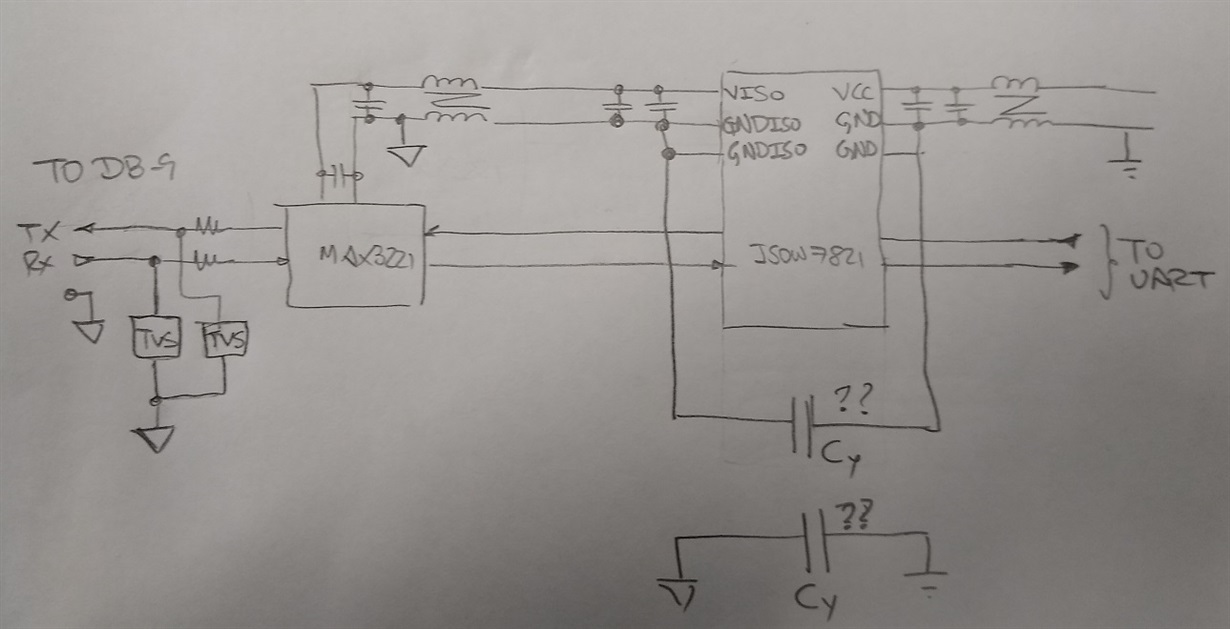Other Parts Discussed in Thread: MAX3221
I have a design based on AD's ADuM6201 that is faling EMC test; fixing it may be complicated. While looking for alternatives, I found ISOW7821 that could be a perfect drop-in replacement as far as package, logic I/Os and supplies are concerned (same package size, similar pinout). However, some pins that are NC on ISOW7821, have some function on ADuM6201 and are connected to either VCC or GND. I would like to know if these NCs could be connected to some logic level or they need to be left NC.
Other than that do you see any reason why it should not work as a replacement? FWIW it is connected to a MAX3221 on the secondary side and it isolates this port from a floating circuit of an applied part.
Thanks in advance.




